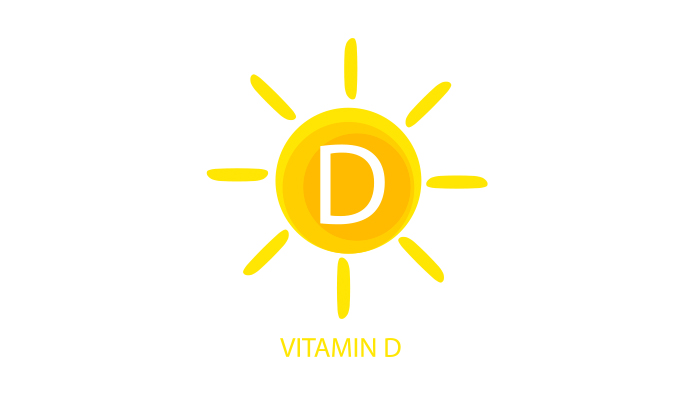The South Lake Pediatrics blog will focus on nutrition in 2022. Each month, we will bring you information on one of many topics in this subject. If there is a particular nutritional question you think would be interesting to learn more about, please feel free to leave a comment below.
Vitamin D is a popular subject these days. There is a lot of discussion in the media and online about the benefits one can receive by taking it. What exactly does vitamin D do? How can we get enough of it? Should my child take a supplement?
The biggest role vitamin D plays in our body is maintaining our bone health. It regulates how much calcium we take up from our gut. It is involved in the balance of building and breaking down our bones to keep calcium at a steady state in our blood. If a baby is very deficient in vitamin D, they can develop rickets. Rickets creates soft bones and skeletal deformities. As we age, if we haven’t maintained strong bones through calcium and vitamin D intake in our youth, we can develop osteoporosis.
Vitamin D is the subject of other areas of study. It has been studied regarding cancer, mental health, and the immune system. In mental health, there is a relationship between low vitamin D levels and depression. Clinical trials have not played out in terms of a supplement of vitamin D improving depression. However, these trials and variations on adding vitamin D in with different medications are still ongoing. Several forms of cancer have had associations with lower vitamin D. What that means for treatment and prevention is still being studied. Finally, vitamin D has been shown to play a role in the function of our immune cells. It has been found to be low in some autoimmune conditions.
We have the ability to synthesize vitamin D from cholesterol in our skin. When sunlight hits our skin, it starts the process of creating vitamin D. The substance from our skin is modified by our liver and, then, by our kidneys to become the active form of the vitamin our body uses. The darker your skin is, the more sun exposure it takes to make vitamin D. Sunscreen blocks our skin from creating vitamin D. Sunlight filtered through a window does not induce vitamin D production. Protecting our skin from sun damage and future skin cancers is very important. Luckily, there are other ways to get enough vitamin D without having to synthesize it ourselves.
There are a few foods that contain vitamin D naturally like fatty fish such as salmon and tuna. Fish liver oil, beef liver, and egg yolks also contain some vitamin D. In the United States, much of our food is fortified with vitamin D. A cup of milk, be it cow, almond, or oat, contains about 120 international units (IU’s) per cup. Many cereals and orange juices are fortified as well. Infant formula is fortified with vitamin D. If your baby consumes at least a liter a day of formula, they are receiving what they need without supplementation.
There are different recommendations by various medical societies as to what level of vitamin D your blood should have. You may find a variety of numbers when googling but, in general, above 30 ng/ml is what we are looking for. In order to get this, babies need to take in 400 IU’s of vitamin D a day. If they are breastfeeding, we recommend supplementing with that amount in a liquid vitamin. After a year of age, children should receive 600 IU’s a day. If your child or adolescent isn’t consuming enough in their diet, supplementing them is a good idea (especially during our Minnesota winters!).
There is such a thing of too much of a good thing! The max doses of vitamin D a day are as follows:
0-6 months: 1000 IU
7-12 months: 1500 IU
1-3 years old: 2500 IU
4-8 years old: 3000 IU
9+: 4000 IU
In extreme cases of vitamin D intake, kids can develop kidney failure, calcifications in their soft tissues including in their heart, and heart arrythmias so be mindful of mega dosing.
Our recommendations for consumption of vitamin D and blood levels are based on bone health. There are lots of fascinating connections between different areas of health and vitamin D. Remember, while we have worked out the details of bone health, the rest is still a work in progress. Be wary of any supplement being presented as a magic bullet for a variety of health cures. That being said, it’s January…..in Minnesota. My family is taking vitamin D!

Leave a Reply